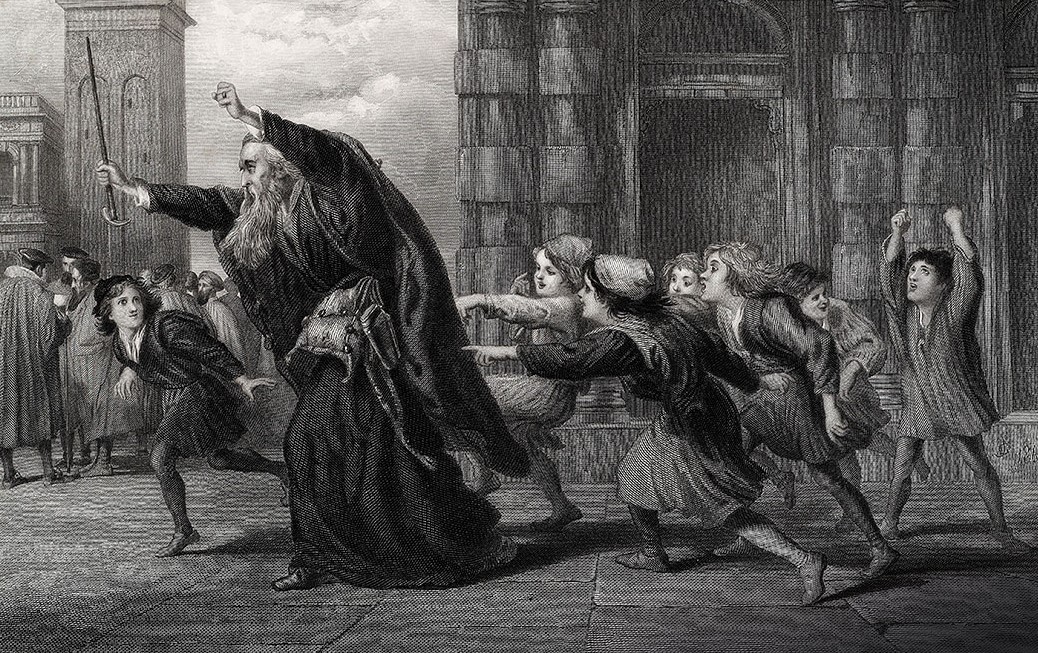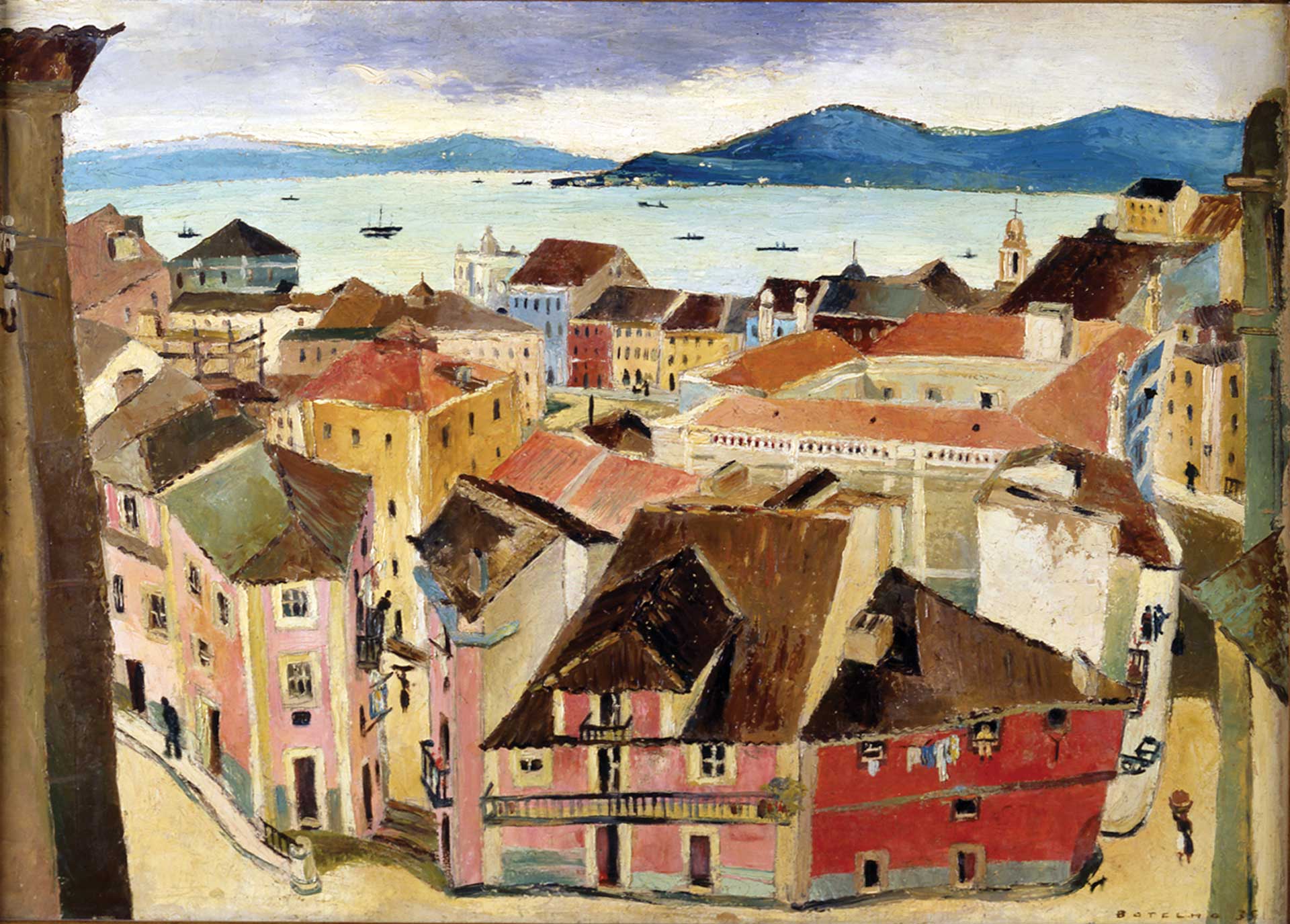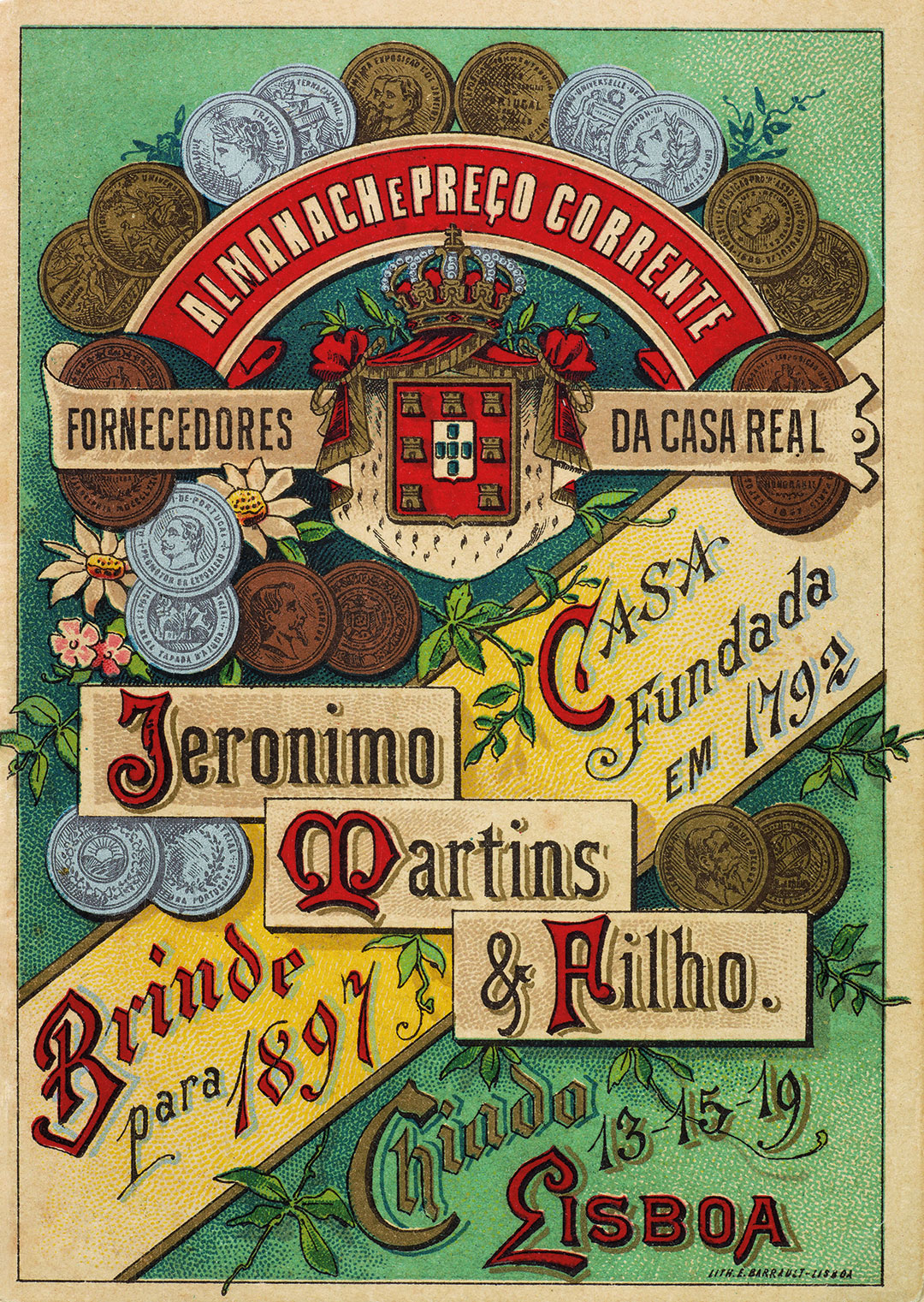
The Almanac, a window of society
They started as clay tablets with the calendar of the year, the moon’s phases, the times of sunrise and sunset, the position of stars in the sky, the tides, and advice for farmers. They evolved over the centuries and started to reach a broader audience in the mid-15th century with the invention of the printing press. In the 16th and 17th centuries, almanacs were bestselling books, rivalled only by bibles. In Great Britain at that time, some four hundred thousand copies are thought to have been sold each year. In Portugal, almanacs also appeared for the first time in the 15th century, although their variety and readership peaked only in the second half of the 19th century. In the words of Eça de Queiroz (1845-1900), the novelist who personified réalisme in Portugal, “the almanac is the book that sets out the boundary stones and precisely draws the lines within which all of life in society is played out”.
Almanacs were filled with practical, everyday teachings, informed by science and particularly valuable to country dwellers, as well as to the urban élite. The content of these booklets, sometimes featuring illustrations, catered to popular tastes and was predominantly agricultural and religious, listing the dates of markets and fairs, or the best time to sow crops, always looking to what will happen in the future rather than recording the past. As more people learned to read, publishers started to target specific audiences with new kinds of special interest almanacs. There were editions ranging from the religious and recreational to others dealing with magic, corporative or cultural affairs, or specific professions, as well as almanacs written by intellectuals interested in aesthetics, the arts and politics.
THE PRICE IS RIGHT
Published annually between 1880 and 1916 by the Jerónimo Martins store, the Almanaque Preço Corrente (Standard Price Almanac, in a free translation from the Portuguese) contained commercial information, offering some sort of catalogue of the products available and their selling price. But to modern eyes, they provide a portrait of Lisbon’s commerce and society of the time, of bourgeois taste and the dominant aesthetic sense in the closing years of the monarchy and the early days of the Portuguese Republic.
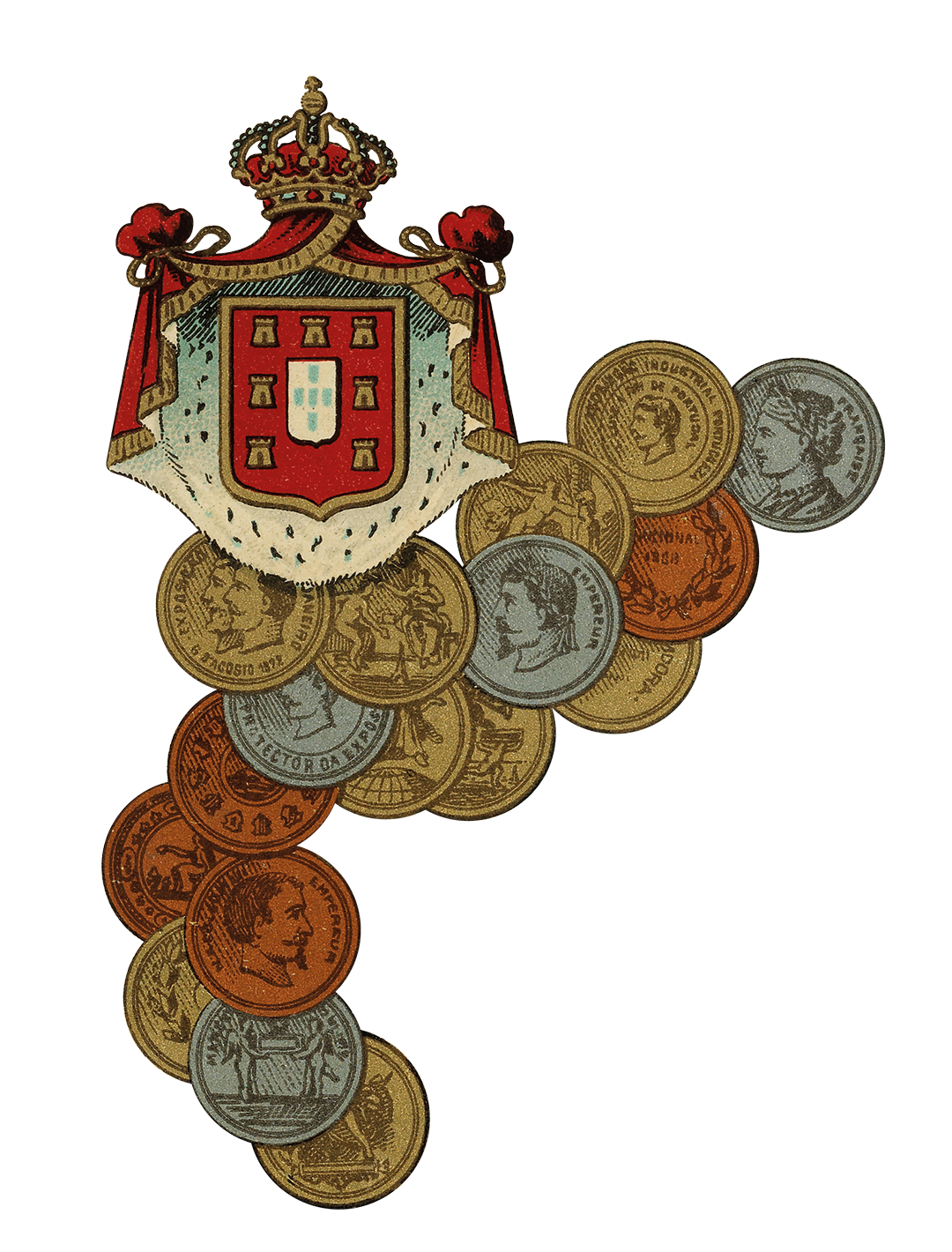
1880
The first almanac owed its publication to João António Martins, grandson of the founder of the high-end grocery store in the historic Chiado district in central Lisbon. It appeared in a year when the establishment was struggling to recover financially. The plain and sober design contrasted with the editions from 1885 onwards, when advances in printing techniques brought colour, decorative elements and delicate lithographs from the leading Portuguese artists of the time – such as Rafael Bordallo Pinheiro (1846-1905).
SUPPLIERS TO THE ROYAL HOUSEHOLD
The illustrations in the Jerónimo Martins almanacs reflected political events in Portugal. As Supplier to the Royal Household (a title awarded in 1858, during the reign of John V), it displayed the royal coat of arms on the covers of all the almanacs, and the first few pages included a brief genealogy of the royal family. On the eve of the founding of the Republic in 1910, the references to the monarchy were dropped from the almanacs.
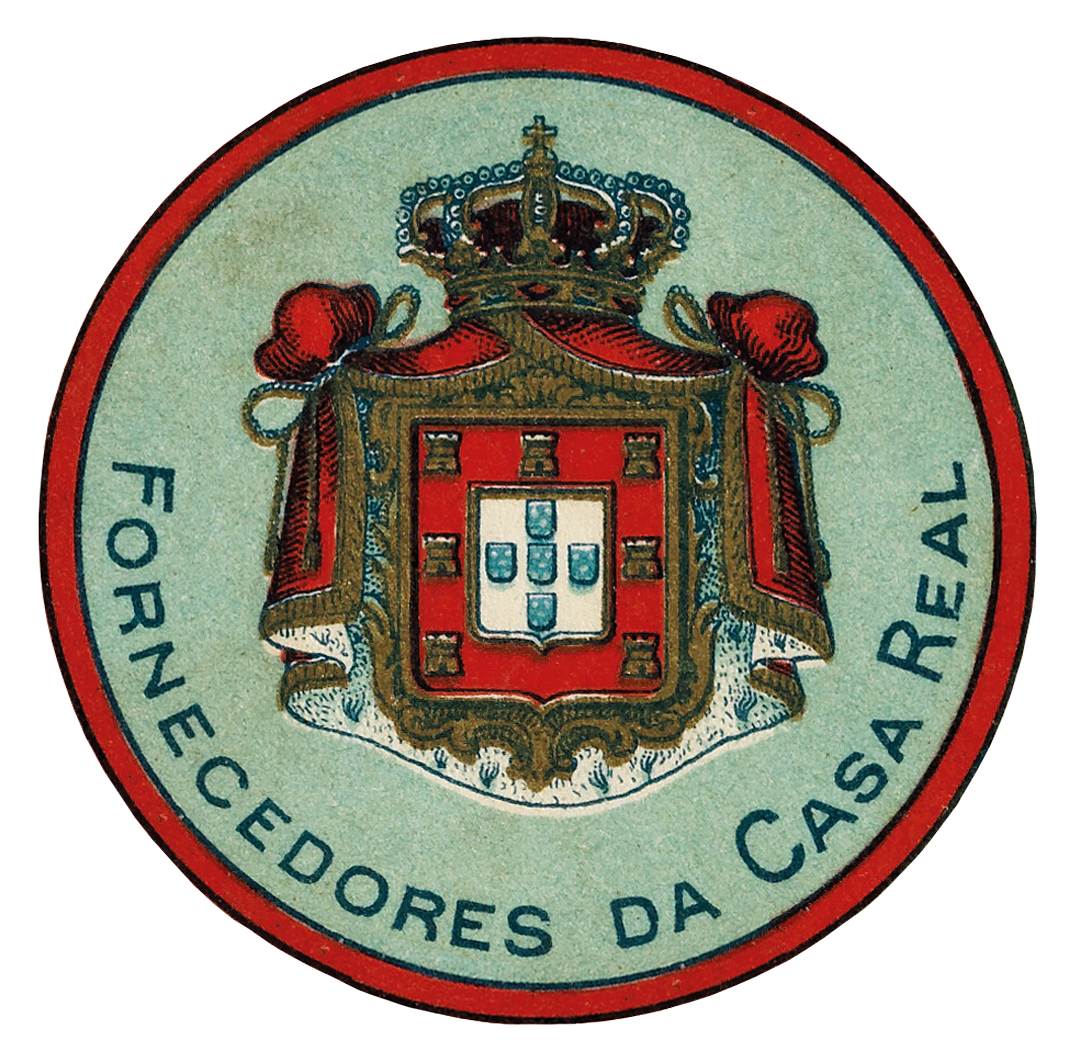
FEMALE FIGURE IN THE 1ST REPUBLIC
The cover of the 1913 almanac features an allegory to the new Republic, embodied by a strong and determined female figure. The female figure here is powerful and protective, in contrast to that of the monarchy, which was delicate, sensual, exotic or merely a servant girl. With one foot on a moving wheel and another in mid-air, she appears to beckon the reader towards the future. In her hands, she holds a shell, symbol of prosperity.

FIRST WORLD WAR AND DECLINE
With the outbreak of the First World War in 1914, belief in progress and confidence in the future were both dealt a severe blow. The war persuaded Jerónimo Martins to discontinue its almanac, as suggested by a word of warning to customers in that year’s annual: “Due to constant changes in prices, we are unable to present this table, as would be our great wish, with the respective printed prices.”
ART & MODERNITY
The cosmopolitan Belle Époque ethos was reflected in the store, which offered luxury goods and sophisticated products for a wealthy and sometimes well-travelled clientele, as clearly reflected in the graphic design. The art nouveau aesthetic finds its way into nearly every edition, with stylised drawings of flowers, ribbons, ornaments, elaborate lettering and slender human figures. Only in 1914 did the art deco style appear, bringing a new geometric simplicity of line.
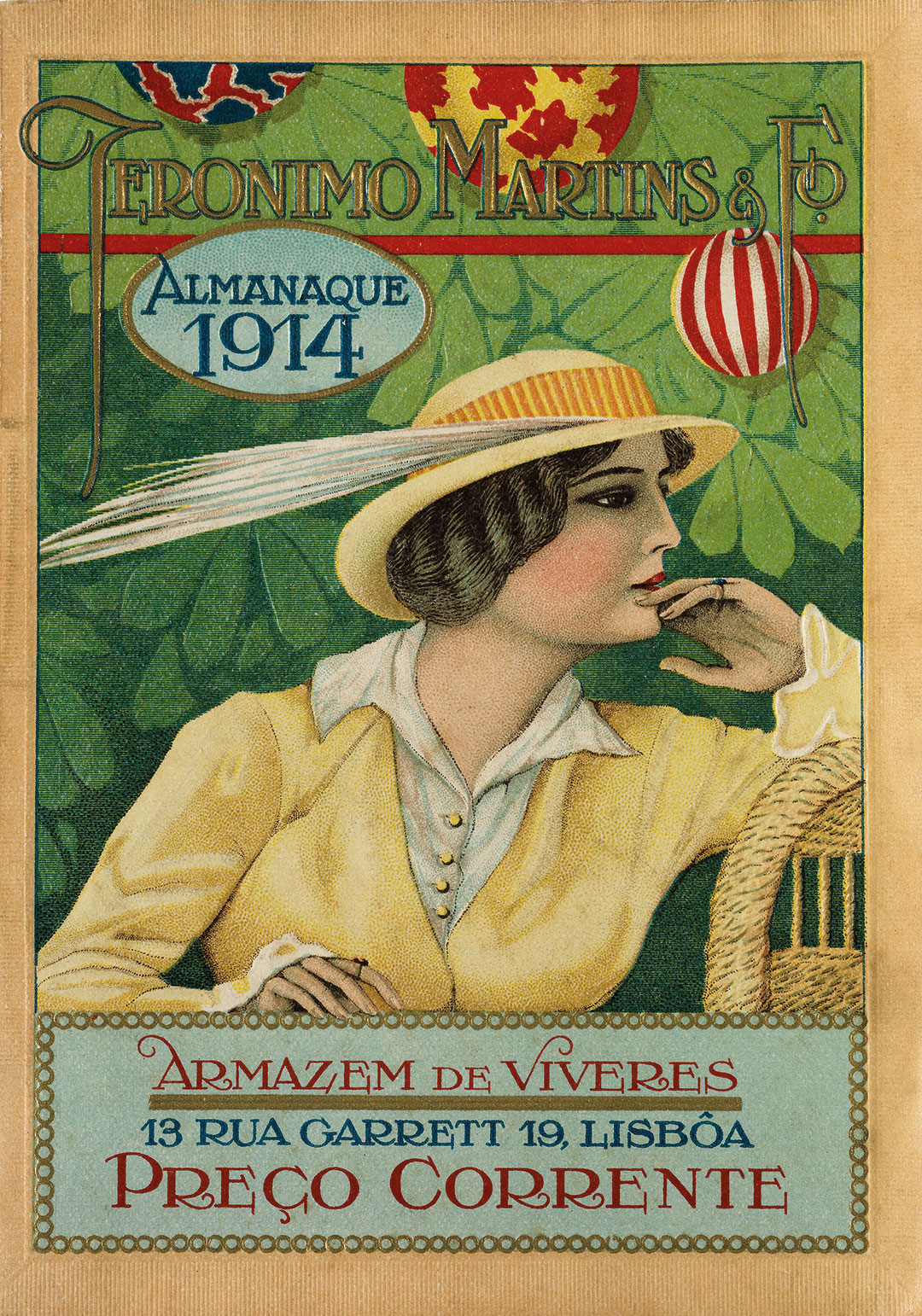
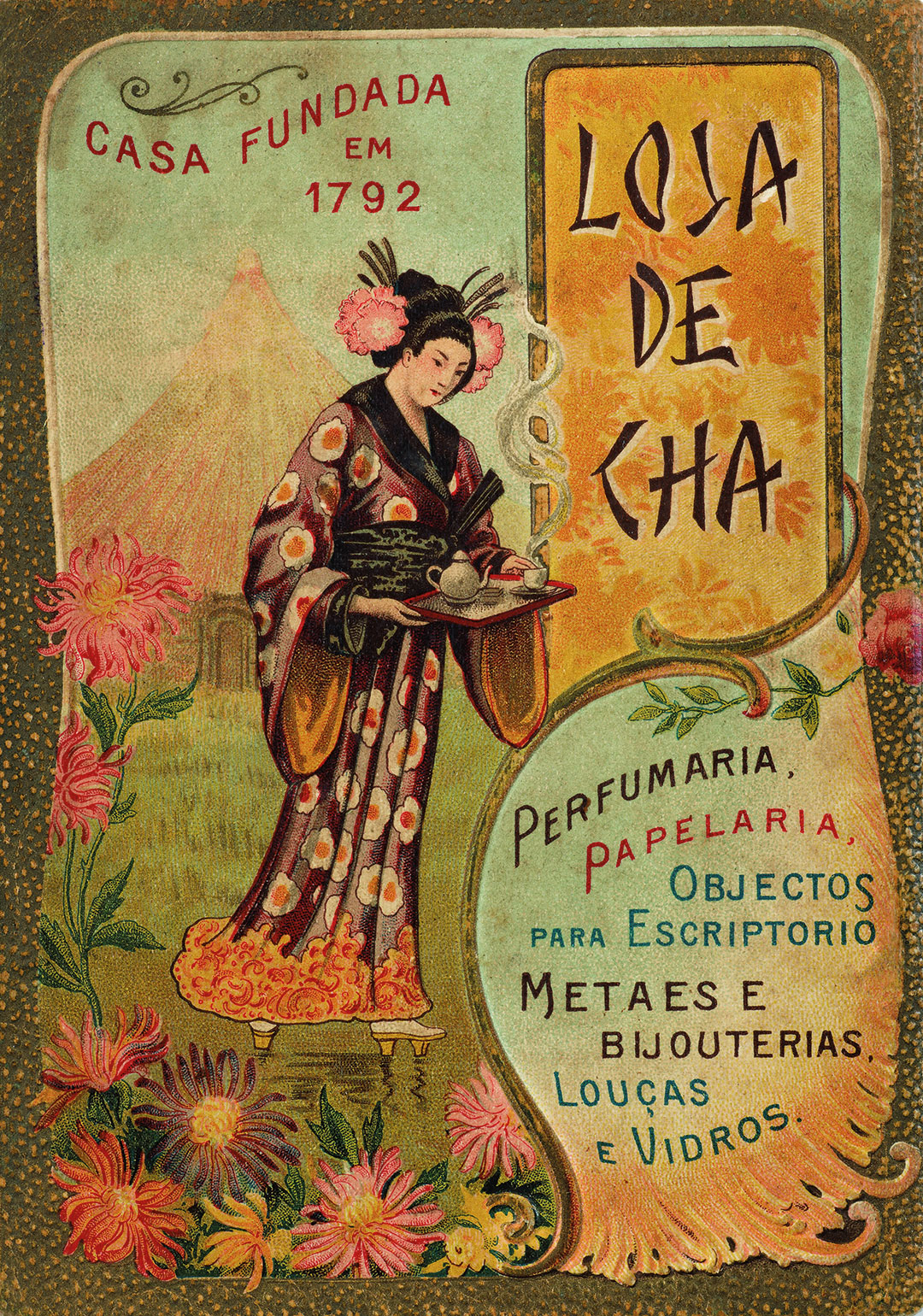
JAPANESE AND ORIENTAL INFLUENCE
The European fashion for all things Japanese generated a phenomenon known as Japonisme, inspired by the mystery and sensuality of a distant land that had previously been entirely closed in on itself. In historical terms, this is a rather curious phenomenon, considering that Portugal had much closer ties to Macau and China. The Japanese tea sold in the establishment’s “teashop” offered an opportunity to include motifs inspired by the Pacific nation. Other Japanese items sold included fans, porcelain and lampshades.
THE VALUE OF MYTHOLOGY
Mercury, the Roman God of commercial success, is another recurrent symbolic element. He is frequently represented with a winged helmet, winged sandals, and holding a purse and a caduceus, or staff, entwined by two serpents and surmounted by wings.
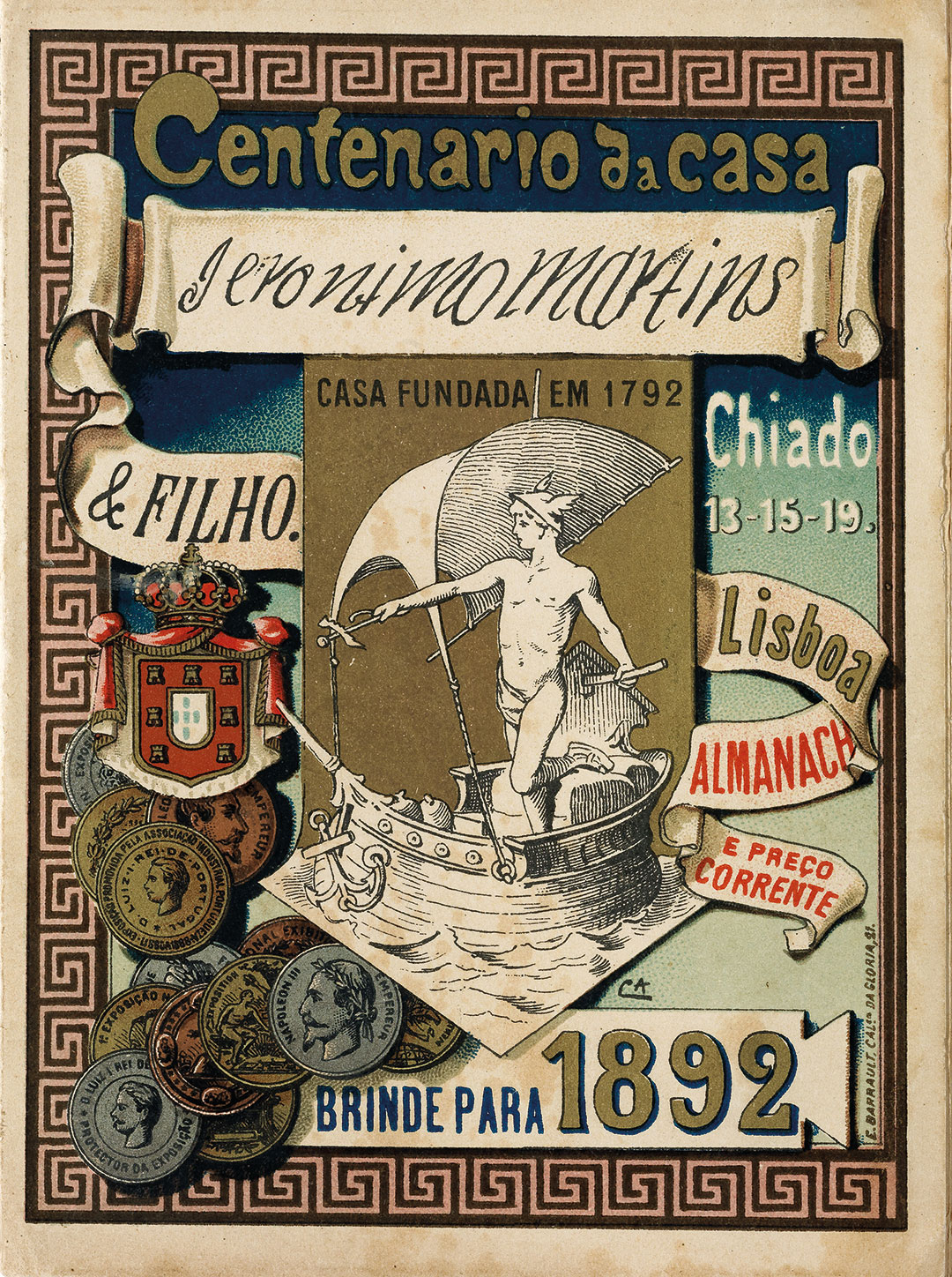
THE COME BACK IN 2022
In May 2022, the Group launched a commemorative edition of the emblematic Almanaque Bertrand, belonging to Portugal’s largest chain of bookshops, to mark the 230th anniversary of Jerónimo Martins. The flipbook of this joint project is available on the Jerónimo Martins website. The partnership shines a light on the shared history of the two companies, founded in Lisbon’s Chiado district in the 18th century. In 1732, the French bookseller, Pedro Faure, opened the Bertrand bookstore on Rua Direita do Loreto.
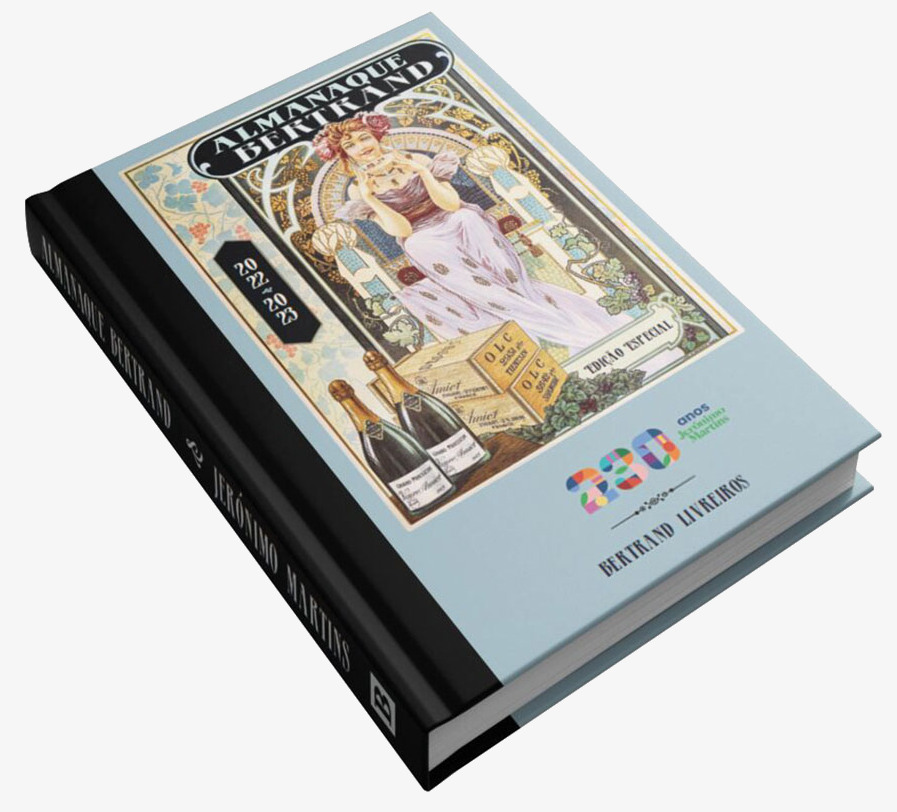
Sixty years later, it was the turn of Jerónimo Martins to open his small grocery store, just a stone’s throw away. On the Jerónimo Martins website, you can also visit an online exhibition concerning the importance of almanacs in the Group’s history, exploring the consumer habits of Portuguese society and many other aspects of Portuguese history at the time.

